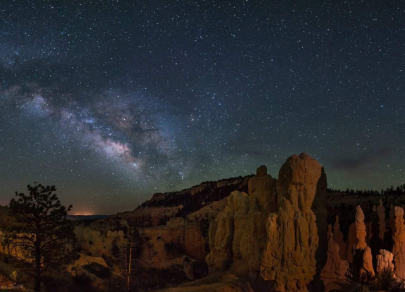
Top 5 locations for stargazing
Astrotourism is becoming more popular every year. People are willing to travel thousands of kilometers to admire the stars. But which places on Earth are considered the best for this? Let's find out now!




Iceland
Iceland is the top green nation on our list. It produces an impressive 80% of renewable energy per capita, the highest rate among all countries. This is mainly thanks to Iceland’s exceptional landscape, dominated by volcanic rocks and ice cover. The country had to switch to renewable energy because of the lack of carbon fields. Iceland has to import coal, crude oil, and other fuels, which makes it dependent on other countries. In this light, in the 1930s, Iceland started using geothermal energy for electricity generation. Such infrastructure has become increasingly popular with locals and tourists over time. The Blue Lagoon geothermal station is perhaps the most popular landmark in Iceland.

Sweden
Sweden is the second country leading in the use of renewable energy. Its authorities have always taken care of the environment. In the 1978-1980s, the country started to build hydropower plants and nuclear power stations. In 2015, the Swedish government pledged to phase out the use of fossil fuels. Investments in solar and wind energy, green innovations, and clean transport have increased since. To raise awareness among citizens and businesses and make them follow green guidelines, Sweden imposed a carbon tax, the so-called green certificates. Renewable energy producers were freed from paying most taxes. However, despite that, there is a shortage of electricity in the country. According to Bloomberg, when Sweden shifted to wind energy and closed its oldest nuclear reactors, it sparked an energy crisis. Fuel demand mounted in the blink of an eye. At the same time, the energy system, which is now going through a transitional period, hardly copes with its current tasks

Germany
Germany is the third leading nation in terms of green energy. It has been actively engaged in this field since 1990. At the same time, solar energy generation in the country has increased almost eight times. In 2015, Germany's clean energy generation reached a record level, about 78%, owing to the use of renewable energy sources. When Germany shut down most of its nuclear power plants, that became the driving force for green production. The country made this decision after a nuclear accident at the Fukushima Daiichi nuclear power plant in Japan in 2011. Chancellor Angela Merkel demanded to close national nuclear power plants. However, despite impressive spending on green energy, the government has made little progress. The country is now producing too much energy and selling the surplus. At the same time, the level of traditionally-made energy remains high. Notably, Germany spends a whopping €32 billion on the Energiewende program every year. This strategy is the ongoing transition of the country to renewable energy. Currently, the project has stalled.

Uruguay
Uruguay is the fourth nation keen on preserving the environment. Large-scale investments in wind and solar energy have been made possible by an effective regulatory framework and long-standing partnerships between the public and private sectors. At the same time, consumer spending in the country remained at a modest level. Currently, Uruguay's energy system is 95% renewable energy. The country achieved such an impressive result in less than 10 years. The use of biomass and solar energy has also increased. Currently, green energy sources in Uruguay account for 55% of its total energy mix, including transport fuel. At the same time, the country has made progress in the decarbonization of the economy. Uruguay's green production has been praised by the World Bank and the Economic Commission for Latin America and the Caribbean.

Costa Rica
Costa Rica rounds out our top 5 leading nations in the use of green energy. This small country in Central America with a low population density (4.9 million) and unique landscape (67 volcanoes), meets most of its energy needs from hydropower plants, as well as geothermal, solar, and wind energy sources. In the coming years, Costa Rica intends to become carbon neutral. The country has achieved impressive results using 100% renewable energy sources. However, demand for traditional energy is constantly growing despite the active use of green energy. In 2017, the net energy generated in Costa Rica was 98%. To provide its citizens with electricity, the country uses sources of energy from water, wind, and land. Innovative projects are hampered due to the unusual nature of the country's transport system, where there are 287 cars per 1,000 people. At the same time, the share of hybrid cars and electric vehicles running on renewable energy is less than 2%.

Astrotourism is becoming more popular every year. People are willing to travel thousands of kilometers to admire the stars. But which places on Earth are considered the best for this? Let's find out now!